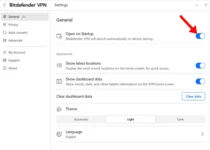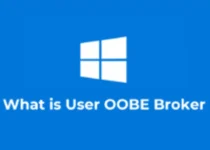10 steps to keep your computer safe and virus-free
Protecting your computer from deadly viruses or any other threat is not difficult or impossible, just it requires some caution and attention from the user, and the most dangerous thing that directs modern technology and electronic devices for free is viruses, malware, and many hacking and hacking methods.
Most users of electronic devices, especially computers, have problems with viruses and malware, either using the Internet, or through various storage media such as USB flash drives, etc., and they are puzzled over how to protect against these viruses and prevent them from penetrating its device So today we’ll get to know a bunch of tips, advice and important steps to keep your computer safe and virus-free.
1. Download and install Microsoft Security Essentials Antivirus
Free antivirus or antivirus from Microsoft for users on every computer running Windows, scanning your computer for viruses, spam, Trojans, and malicious files, my advice to you if you never use any antivirus software, free antivirus download from Microsoft and install it on your system.
2. Keep the updates window on your computer open
If you use Windows 7, 8, and 10 as an operating system, Microsoft Corporation always releases new security updates and updates for Windows. Keep your window up to date. These new updates and security patches always keep your computer safe from viruses.
3. Test new programs before installing them
When trying to download programs and applications from any unofficial site, and if you do not know how this program may affect your system, you need it badly on your device, but often this program or program may contain Trojan viruses harmful to your device. Run a new application in the Virtual Machine before installing to the system. You must first try this program on a fake system before installing it on your device and verify it like a fake system program.
VIRTUAL MACHINE (VIRTUAL BOX).
4. Firewall
Always activate Windows Firewall or Firewall when you’re online if no security software is present on your computer, but when using antivirus software like Kaspersky and Avast, it plays through this firewall this important role.
5. Update and protect your internet browser
Web or internet browsers are the main gateways through which viruses and malware can penetrate your device, so make sure to update your browser, and create and activate the appropriate security settings for your browsers, such as warn me and alert me when sites try to install any additions to my device, too, block suspicious websites, Etc. or warn me when sites try to install add-ons, block suspicious sites, etc.
6. Beware of unknown and suspicious websites and emails
When browsing the internet, malicious websites never open, and use the safe Google Chrome browser to browse in the Chrome browser. When clicking on any suspicious website or the risk of not opening an email and an absolutely unauthorized website, Google Chrome warns you of that, and also, from the basics of information security not to open any package or anonymous message or from someone unknown to us, but rather delete it immediately.
7. Browse sites using HTTPS security encryption
Sometimes we visit many sites without knowing whether the site is safe to browse or not, and in many cases, we see a lot of pop-up ads that come in front of the screen and that always comes to download the page or ask you to download programs and ads..etc, this type or The quality of the websites is dangerous and its encryption is secure and full of viruses. Keep distance from infected websites, so it is always a good idea to look at a green lock in the address bar with the prefix “HTTPS” which is currently secure encryption for websites.
8. Use a well-known and secure internet browser
You should use a well-known and secure internet browser, especially with the huge and widespread availability in internet browsers. Unfortunately, most of them are unsafe and pirated, so it’s best to use a well-known browser like Google Chrome, Firefox, Opera … etc, using Trusted Anddd web browsers.
9. Virus scan and scan
With a well-known and powerful antivirus program, such as Malwarebytes, you can perform a full and comprehensive scan of your device for virus removal if you find Powell Scan For Malware for the first time, and always perform this important step every short period or when you feel your device is not normal.
10. Backup system
After creating a new Windows version, it is best to make a system backup or a copy of your device after completing all important drivers and drivers, save them either to your device or any external storage medium such as flash, and use them to refer to the original device status in case of any problem or virus infection.









